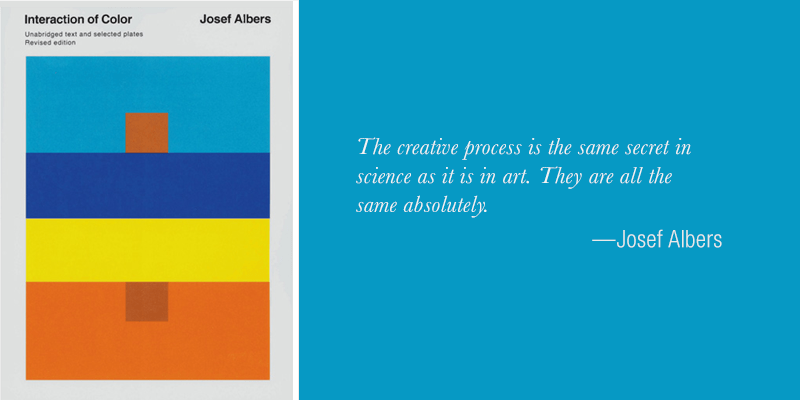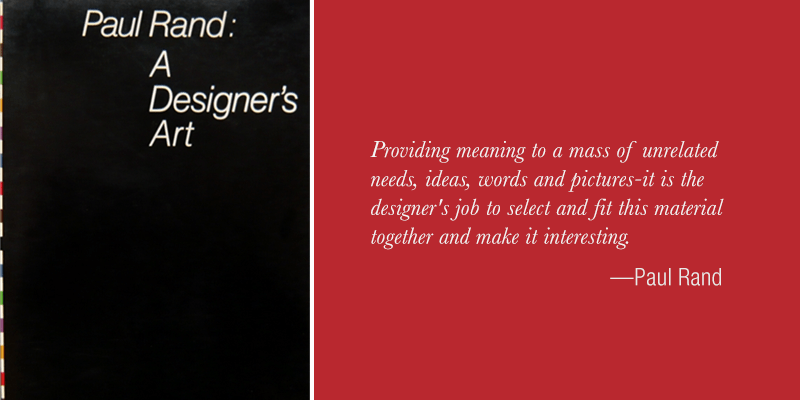A few weeks ago we ran this image as a joke on Facebook:

Between these two books, we've learned the entire sum of all design knowledge.
To our surprise, our readers started asking us where they could buy "Everything They Teach In Design School" and "What They Don't Teach You In Design School."
The problem? They don't exist—we Photoshopped them.
Fear not, friends. We've put together a list of our top five books on graphic design. They may not be the entire sum of all design knowledge, but it's a good start—and we promise these are real books you can read:
Go: A Kidd's Guide to Graphic Design
by Chip Kidd
Chip Kidd might not be a name you know, but you've seen his work. He transformed book design with iconic covers for everything from Jurassic Park to David Sedaris. A snappy dresser and comic book fan, here's his charming TED talk.
Go is short and sweet, ostensibly a children's book but great for any age. Kidd walks through the basics of design in 160 brisk pages. It's a one-sitting book you'll return to again and again.
Why read it: Concise guide to the basics of design.
Buy on Amazon ($11.98)
Design of Everyday Things
by Don Norman
Have you ever been frustrated by doors that you don't know whether to push or pull? Yeah. Don Norman has, too—and has written about them so frequently they're now nicknamed Norman Doors. He has a doctorate in Mathematical Psychology—the study of quantifying how we perceive stimulus—and advocates user-centered design, particularly around commonplace design like doors, buttons, and dashboards.
In Design of Everyday Things, Norman uses one deft example after another to explain basic usability concepts. In Norman's ideal world, the use of every object should be immediately apparent. You don't need an instruction manual for a chair or toothbrush—so why do we have one for our cable box?
Why read it: Quantifiable explanation of what makes something "easy" to use.
Buy on Amazon ($11.73)
The Cognitive Style of PowerPoint
by Edward Tufte
Edward Tufte is a professor at Yale, and renowned for his analysis and criticism of informational graphics. His work focuses on producing the simplest, clearest way to display a set of information without what he calls "chart junk"—deceptive graphical tricks that skew a chart toward a bias.
The Cognitive Style of PowerPoint is primarily about NASA's use of PowerPoint preceding the Space Shuttle Columbia explosion. His case is that PowerPoint makes it too easy to tell a "story" instead of "facts." For sales and marketing professionals—who spend most of their design time in PowerPoint—this is required reading.
Why read it: Make your PowerPoint presentations more effective.
Buy on Amazon ($7.00)Bonus: Tufte's other books—like The Visual Display of Quantitative Information—are pricier but marvels of high-quality craftsmanship and go deep, deep into the world of charts and infographics. Buy the boxed set directly from Tufte for a discount.
Interaction of Color
by Josef Albers
Albers was a professor in the Bauhaus and Black Mountain College, and built the graphic design program at Yale. He is a towering figure in art education and graphic design.
In Interaction of Color, Albers dives into what makes colors work—illustrating the surprising ways that colors play against each other via ten color studies. The simple exercises included in the book give you a working understanding of how colors complement and contrast each other, and work together to create impact.
Why read it: Develop a fundamental understanding of how colors work together.
Buy on Amazon ($14.38)Bonus: there's an iPad app.
A Designer's Art
by Paul Rand
Paul Rand is certainly one of the most famous logo designers of the 20th century. He designed the IBM, UPS, Westinghouse, and ABC logos. He famously offered flat-priced logo design ($100,000) with zero revisions—even if the client was Steve Jobs ("I asked him if he would come up with a few options, and he said, 'No, I will solve your problem for you. And you will pay me.'")
In A Designer's Art, Rand details his theories and design process behind his famous logos. His droll wit make this a charming and inspiring book to read.
Why read it: Learn the design process of the most famous logo designer of the 20th century.
Buy on Amazon ($37.40)Honorable mention:
Conditional Design Workbook
by Edo Paulus, Luna Maurer, Jonathan Puckey, and Roel Waters
The Conditional Design Workbook is a series of collaborative design games. They're simple, fun, and accessible to all ages and skill levels—kind of like a Twister for design. All you need is a big roll of paper, thick markers, and an open mind.
I love this book to death, but it's out of print. You can read it online in its entirety.
Learning design is a lifelong process. These books are a great start. If you need help with design now, take a look at how Lightboard's team of designers and account managers can help you with sales and marketing creative.
Please note: These Amazon links do not have affiliate tags associated with them. We just want you to read great books, wherever you buy them!






